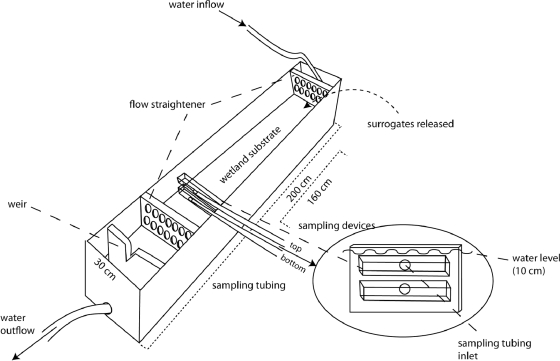FIG. 1.
Schematic diagram of the bottomless flume used in Toxoplasma gondii surrogate transport studies. The flume was placed in either mudflat or vegetated wetland habitats, and water was pumped from the nearby tidal creek into the inflow end at a rate that achieved desired current velocities, while the weir at the outflow end was used to set the water depth to 10 cm for all experiments. Two flow straighteners were used at either end of the flume to reduce turbulence associated with inflow and outflow features. Surrogates were released downstream of the inflow-end flow straightener, and water samples were collected 160 cm downstream from the release point by using two peristaltic pumps that suctioned water separately from the top and bottom depths. The figure is not drawn to scale. (Courtesy of Alison Kent.)

